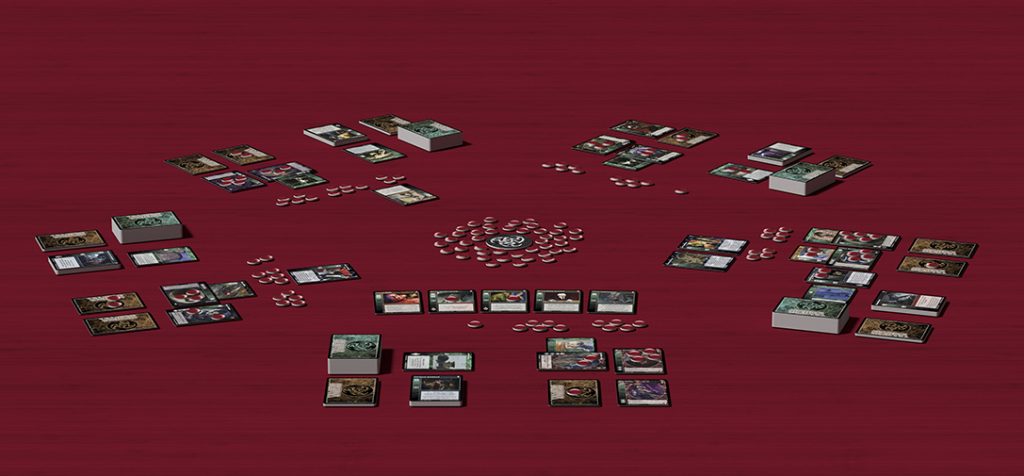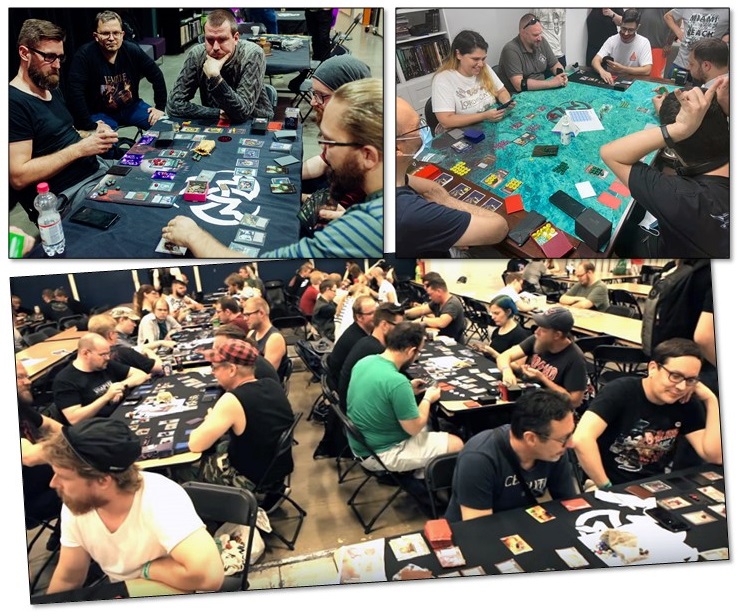Fifth Edition now in stores – An interview with art director Ginés Quiñonero
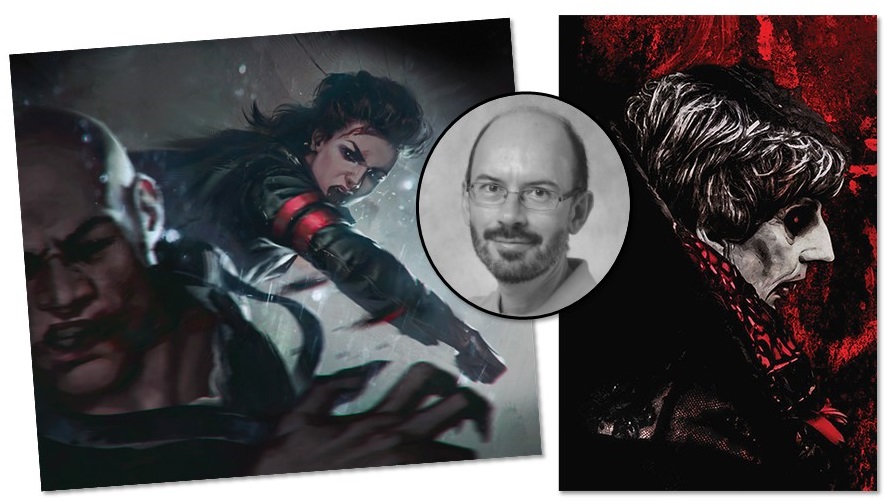
With Vampire: The Eternal Struggle Fifth Edition now in stores, we continue to peek behind the scenes. Something that generally render praise is the card illustrations of the game. This is the domain of Ginés Quiñonero.
Ginés, you are an artist and art teacher, but also the art director of Vampire: The Eternal Struggle (VTES) at Black Chantry Productions. What exactly do you do as an art director?
– My job mainly consists of these activities:
• Commissioning new art.
• Creating art myself when I am motivated by a specific art description or card.
• Finding new artists in order to increase the variety of VTES art.
• Writing some art descriptions. Most are written by Ben Peal.
• Keeping track of any art projects for VTES products, which means having art contracts signed, sketches approved, deadlines met, final artwork delivered, artists paid, etc.
• Submitting art to Paradox Interactive for approval.
• Preparing art files containing old VTES art for future projects, for example updating color space, resolution and aspect ratio when necessary.
• Ascertaining which cards need replacement artwork.
• Designing logos for any expansion sets.
• Supervising our graphic designer.

The “mothergame” of VTES is Vampire: The Masquerade, which has changed its art direction with the most recent edition. How has it changed, and how does that affect VTES?
– Previous art directions were more eclectic style-wise. The current one places more emphasis on the dark horror mood of the World of Darkness, and on making it believable to the audience. That immediately rules out comic-like styles that look childish, for example, which were becoming more and more present in VTES over the years.
Under the current art direction, adult themes are of the highest importance, and therefore need to be properly depicted with the dramatic lighting and contrasting colours they deserve. Now, some acceptable art styles for VTES are: concept art, photo art, artistic graphic novel art, traditional art, etc.
The impact this new art direction has on VTES is conspicuous in any new cards or in any old cards with new art published by Black Chantry. Their art has to adhere to the above-mentioned criteria and to the current World of Darkness lore. A clear example of that is the difference between the previous art of Govern the Unaligned, released in Heirs to the Blood, and the Fifth Edition replacement art for that same card.
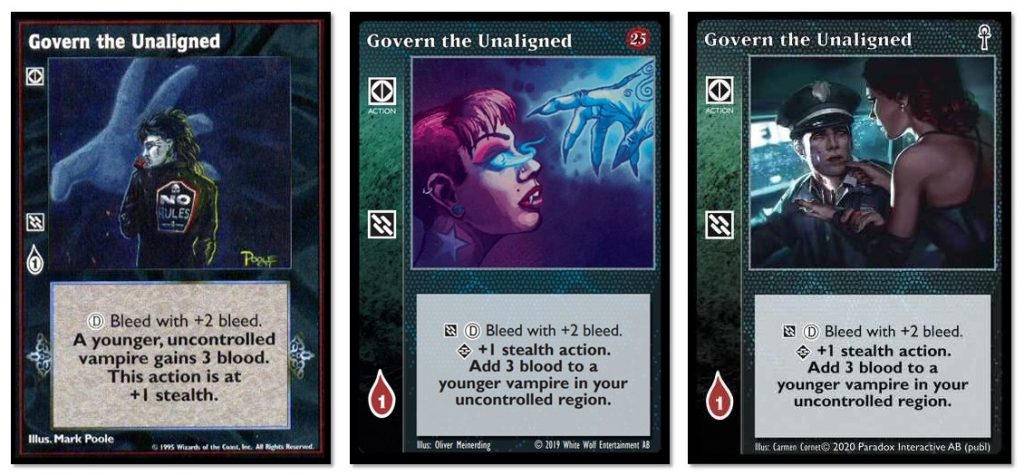
Especially for VTES Fifth Edition, what was the general art direction for the new art?
– The most important thing was basically making sure the art guidelines mentioned earlier were met. However, I am well aware of some issues that negatively affected some artists’ performance in the White Wolf era (2000-2010), that I try to avoid. Therefore, I tend not to overwhelm artists with many art comissions to be delivered within a short period of time, so I give them enough time to complete their illustrations and provide them with flexible deadlines when possible, if asked for.
For this project, I hired artists who were proficient either in photo art or in human figure and/or in urban landscape drawing, who were capable of creating believable portraits of vampires as well as dramatic scenes.
When you discuss with the contributing artists, what are the most common issues?
– Fortunately, I seldom have to discuss any issues with the contributing artists. But when I have to, the most common issues are: misproportions, inadequate lighting, inconsistent perspective and the need to make an illustration look more pictorial, with visible brushstrokes.
You are a VTES artist yourself, with many contributions in recent years. How do you work? Your technique has changed, right?
– My early illustrations for VTES were oil paintings: Masai Blood Milk (2005), Gran Madre di Dio, Italy (2006), Claudio Severino (2010), as well as the ones I created later for the Danse Macabre set (2013). However, even though I had more time available back then, I realised those pieces would take me too long to complete.
So I decided to use a faster technique, pastels and colour pencils, in the sets The Unaligned (2014), Storyline Rewards (2015) and Anarchs Unbound (2016). This time it took me an average of 6 hours to complete an illustration (not counting sketching time). However using pastels also had its drawbacks. Colours changed a bit after fixing the painting.

After that I opted for using acrylics in the Lost Kindred set (2018), a technique that was not ideal, because acrylic colours can change a lot after drying off, but which was fast enough for me. For example, I had to create replacement art for Field Training and Under Siege in two days for the Berlin Anthology, which were urgently needed for print.
Due to the dark nature of VTES illustrations, taking photos of some of them to create image files was really a pain, because of the constant reflections appearing in the darker areas. Regardless, photos never looked exacly like the painting.
Therefore I finally decided to use a Wacom tablet, that I already had at home, and the ArtRage software for natural painting. So I went down the path of digital art! It is even faster than pastels, and I do not have to waste any time taking photos to the final piece. It also provides me with a plethora of tools that make painting an even better experience. My first digital illustrations were released in Lost Kindred (2018) and subsequent sets.
When I have to create an illustration, I write down any ideas that come to my mind after reading the art description, and then start sketching until the composition of the illustration pleases me enough to proceed with the final piece.
Afterwards, I try to find any references that can be useful, and then I start drawing and painting in ArtRage, following these steps:

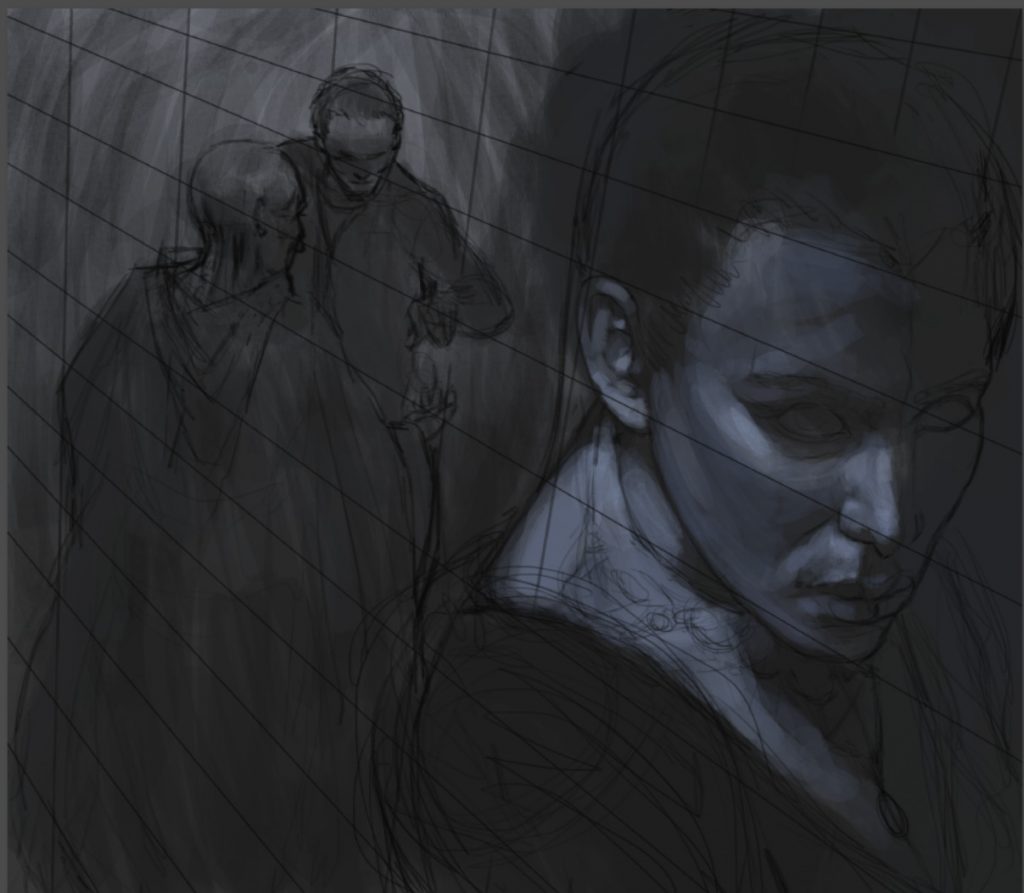
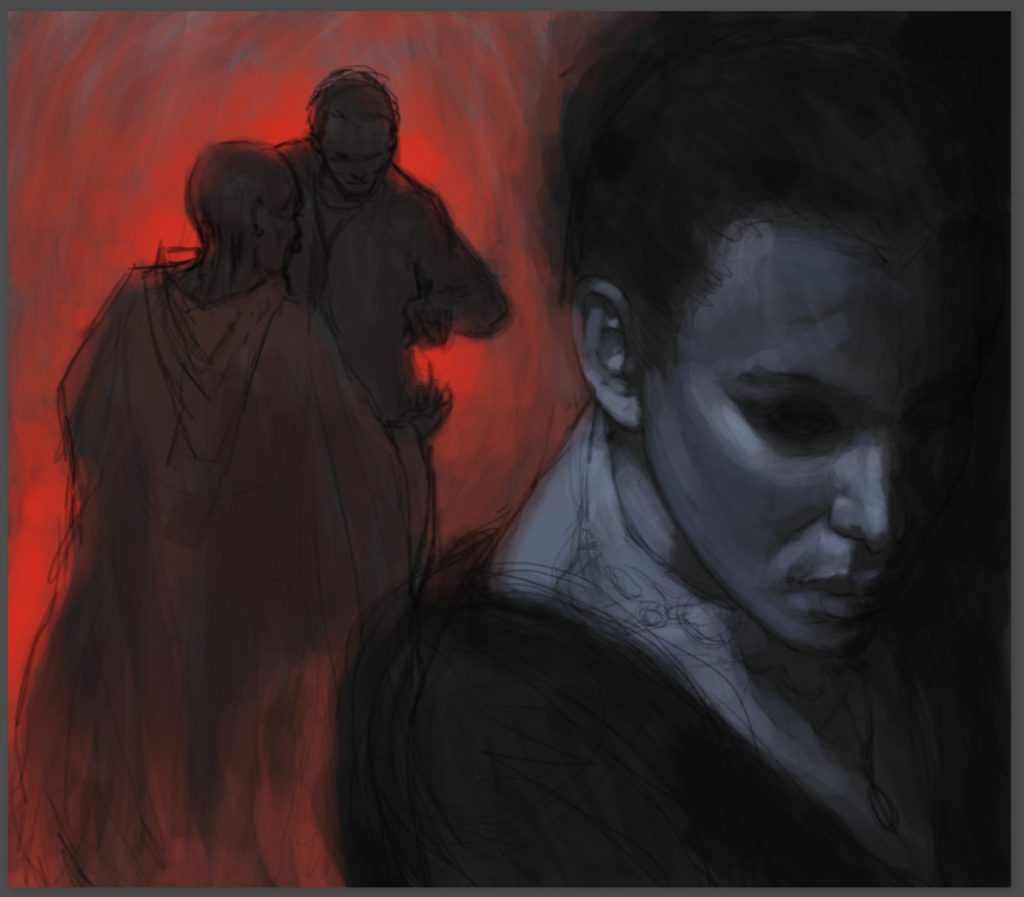
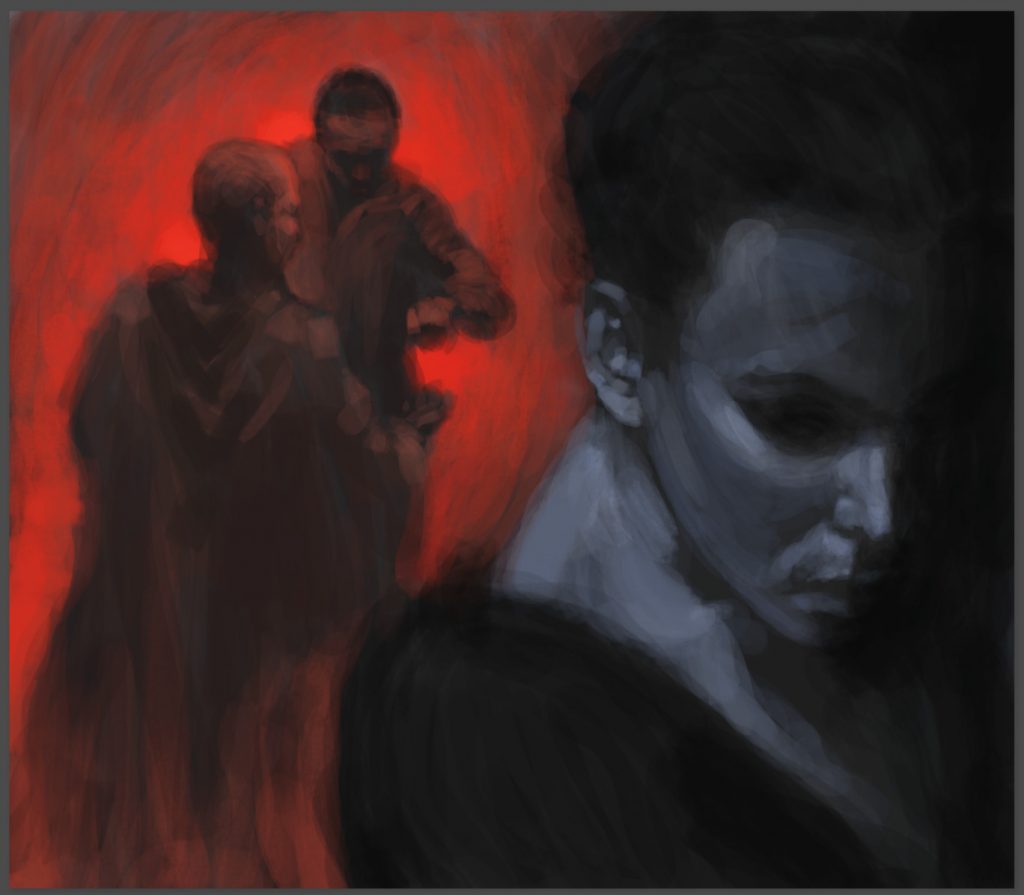
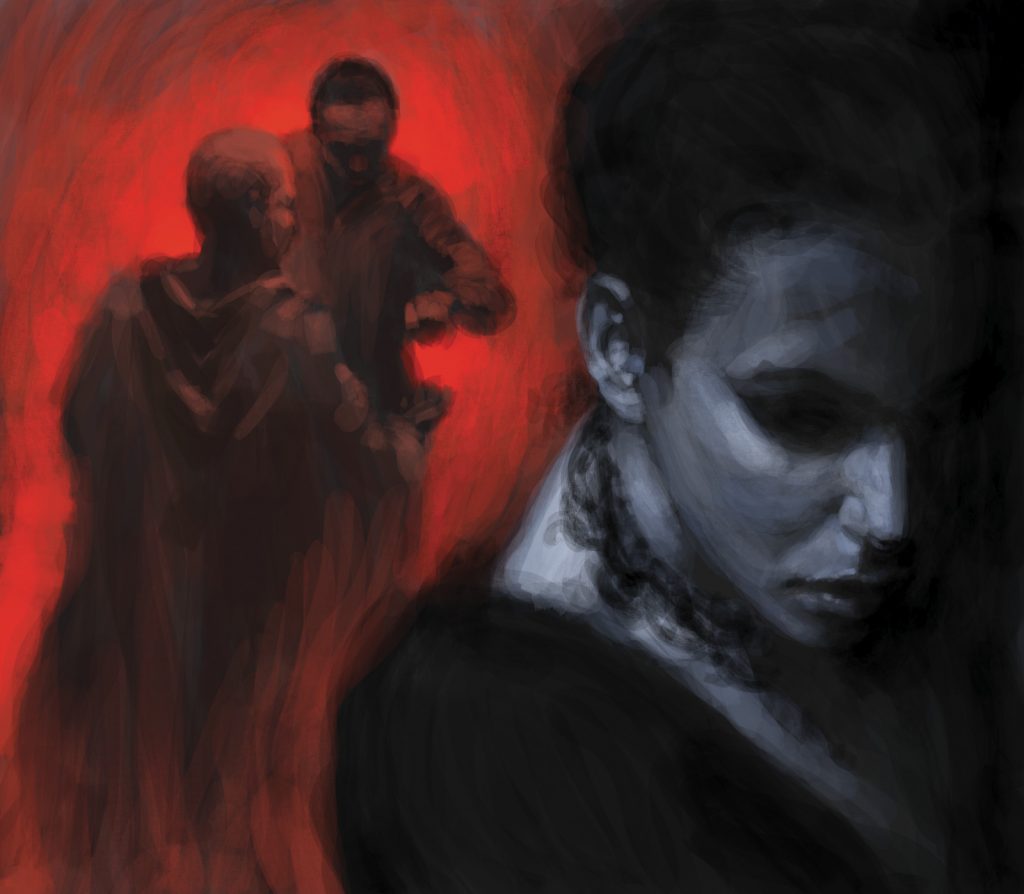
My style has been evolving over these years because I have always been looking for inspiration in the artists I admire, among whom are several VTES illustrators. Most recently I am trying to make my illustrations look more pictorial with evident brushstrokes.
Vampire: The Eternal Struggle Fifth Edition is available for all stores and distributors. For more information please visit www.blackchantry.com. Contact us by mail or social media.

Copyright © 2024 Paradox Interactive AB. www.paradoxinteractive.com. All rights reserved. Vampire: The Eternal Struggle and Vampire: The Masquerade® are trademarks and/or registered trademarks of Paradox Interactive AB. All rights reserved.



